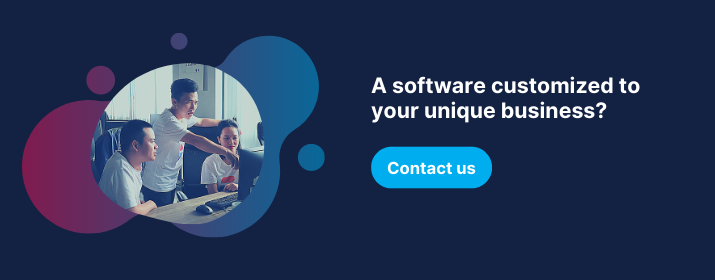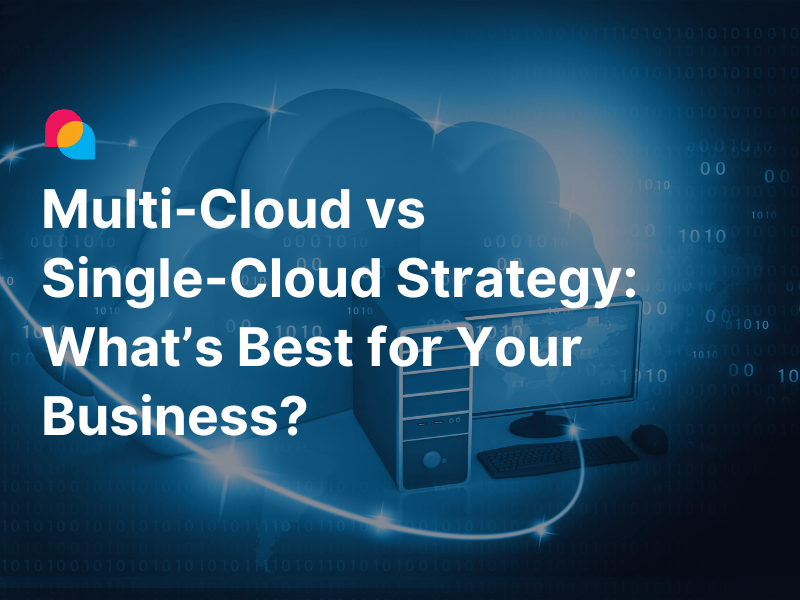Software customization vs. Off-the-shelf solutions: A comprehensive analysis
In the fast-paced and ever-evolving world of technology, businesses continually face critical decisions that can significantly impact their efficiency, competitiveness, and overall success. One such pivotal decision revolves around the choice between software customization and off-the-shelf solutions. Both options have their merits and drawbacks, and making the right choice requires a nuanced understanding of their intricacies.
This extensive guide aims to provide you with an in-depth exploration of software customization and off-the-shelf solutions. By the end of this journey, you'll not only grasp the fundamental principles behind these options but also possess the knowledge needed to make an informed decision that seamlessly aligns with the unique requirements of your business.
Software customization
Software customization is a dynamic process wherein a software solution is meticulously tailored to meet the precise needs and preferences of a particular business or organization. This customization encompasses a spectrum of modifications, ranging from fine-tuning existing software to the development of entirely new applications. The goal is to create software that seamlessly integrates with and optimizes the unique requirements of the business.
Advantages of software customization
Personalization and tailored features
One of the foremost advantages of software customization is the ability to personalize the software to match the intricate workflows and distinctive processes of your business. This level of tailoring ensures maximum productivity and efficiency as the software becomes an extension of your operations.
Enhanced scalability
Customized software is inherently flexible and adaptive. It can evolve alongside your business, accommodating changing needs and demands without requiring a complete overhaul. This scalability ensures that your software investment remains relevant and valuable in the long term.
Greater control and flexibility
Perhaps the most compelling aspect of software customization is the unprecedented level of control it grants over the software's functionality. This control empowers businesses to swiftly adjust and adapt the software in response to evolving requirements, ensuring that the technology consistently aligns with your strategic objectives.
Disadvantages of software customization
Higher initial costs
The process of developing and customizing software often incurs higher upfront expenses compared to implementing off-the-shelf solutions. This financial commitment can strain budgets, especially for smaller businesses.
Longer development timelines
Customized software projects typically require more time for development, which can potentially delay the implementation process. It's essential to consider these extended timelines when planning for software customization.
Maintenance and support challenges
The uniqueness of customized solutions can present challenges in terms of ongoing maintenance and support. Specialized expertise may be required, and businesses must allocate resources to ensure the software remains efficient and up to date.
Limited vendor support
Customized software solutions may not benefit from the extensive vendor support available for off-the-shelf products. This means that businesses are often responsible for addressing issues and ensuring the software's functionality independently.
Off-the-shelf solutions
In contrast, off-the-shelf solutions are pre-built software packages readily available in the market. These solutions are designed to cater to a broad range of industries and purposes, making them accessible for purchase and immediate deployment without requiring extensive modifications.
Advantages of Off-the-shelf solutions
Cost-effectiveness
Off-the-shelf solutions are typically more budget-friendly as development costs are distributed across a larger customer base. This cost-effectiveness makes them an attractive option for businesses with limited budgets.
Quick deployment
One of the most significant advantages of off-the-shelf solutions is their rapid implementation. Businesses can start using these solutions almost immediately, minimizing downtime and disruptions to operations.
Established support and updates
Off-the-shelf software benefits from continuous updates and reliable support from vendors. This ensures that the software remains up-to-date, secure, and functional, relieving businesses of the burden of maintenance.
Disadvantages of Off-the-shelf solutions
Limited customization
While off-the-shelf software offers convenience and rapid deployment, it may not perfectly align with the unique business processes and specific needs of an organization. This limitation can necessitate workarounds or adjustments to adapt the software to your operations.
Potential for feature bloat
Some off-the-shelf solutions come equipped with a wide array of features, many of which may be unnecessary for a particular business. This feature bloat can clutter and complicate workflows, leading to inefficiencies.
Compatibility issues
Integrating off-the-shelf software with existing systems can pose compatibility challenges. Businesses may need to invest additional time and resources to ensure seamless operation and data exchange between systems.
Factors influencing the choice
When faced with the decision between software customization and off-the-shelf solutions, several critical factors come into play.
Business size and budget considerations
The available budget and the size of the business play a pivotal role in determining the feasibility of customization or opting for off-the-shelf solutions. Smaller businesses with limited budgets may find off-the-shelf solutions more accessible. According to Gartner, off-the-shelf software solutions are expected to account for 45% of total enterprise software spending by 2024.
Specific industry requirements
Certain industries have unique regulatory or operational demands that necessitate customization to ensure compliance and efficiency. In contrast, industries with standardized processes may efficiently leverage off-the-shelf solutions.
Long-term vs. short-term goals
Consider whether your business prioritizes immediate implementation or long-term scalability. This strategic choice will significantly influence the decision between customization and off-the-shelf solutions.
Read also:
- Key numbers to look at when outsourcing software development in Vietnam
- Why Vietnam to Outsource Software Development
- 14 Insights into Vietnam Outsourcing Software Development
Trends in Software Customization & Off-the-Shelf Solutions
The software landscape is dynamic and constantly evolving. Staying informed about current trends is essential to making an informed choice:
AI integration
AI-powered customization tools are gaining prominence, allowing for more intelligent and context-aware software personalization. Businesses can harness the power of AI to tailor their off-the-shelf solutions more effectively. The AI market size for customer service is expected to grow at a compound annual growth rate of 23.1% from 2023 to 2030, according to Grand View Research.
Cloud solutions
Cloud-based off-the-shelf solutions are becoming increasingly popular. These solutions offer scalability, accessibility benefits, and simplified maintenance.
Blockchain technology
Blockchain technology has the potential to influence data security and transparency in both customization and off-the-shelf solutions. Exploring blockchain applications can be crucial for businesses focused on data integrity.
Here is a comparison of the key points of Software Customization vs. Off-the-Shelf Solutions:
|
Criteria |
Software Customization |
Off-the-Shelf Solutions |
|
Definition |
Tailored software to meet specific business needs |
Pre-built software for a broad range of industries |
|
Advantages |
1. Personalization and tailored features |
1. Cost-effectiveness |
|
2. Enhanced scalability |
2. Quick deployment |
|
|
3. Greater control and flexibility |
3. Established support and updates |
|
|
Disadvantages |
1. Higher initial costs |
1. Limited customization |
|
2. Longer development timelines |
2. Potential for feature bloat |
|
|
3. Maintenance and support challenges |
3. Compatibility issues |
|
|
4. Limited vendor support |
Final thoughts
In the dynamic realm of software solutions, the decision between customization and off-the-shelf solutions should be approached with careful consideration. Each option presents a unique set of advantages and disadvantages and the optimal choice hinges on your business's distinctive circumstances and objectives.
By meticulously weighing the pros and cons outlined in this guide and rigorously evaluating your specific needs, you will be empowered to make an informed decision that not only enhances productivity and efficiency but also shapes the future success of your business. Choose wisely, for the path you embark upon will be instrumental in realizing your business's potential in the digital age.





